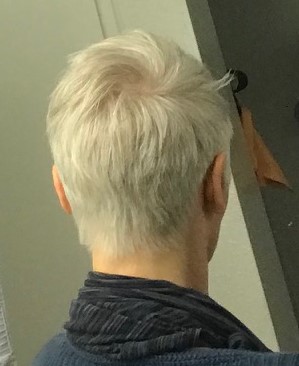As an alumna of one of the universities involved in the recent U.S. college admissions scandal, I’ve been following the details of this story with great interest. My eldest will be completing college applications this autumn. She is a remarkable student; however, unlike many of my fellow alumni, I have not had the means to put her into every imaginable extracurricular activity.
Yet, I had impressed upon her the importance of always doing her best and getting into a “good” university to improve her choices for the future, particularly since there will not be a windfall waiting for her when I die.
But the recent events have left a sour taste in my mouth. Particularly since my cancer diagnosis, I’ve been rethinking the stressors that are placed on students in the hopes of getting them into the “best” schools.
So much anxiety and lost sleep. Pressures to compete. I can no longer say that it’s worth it. The recent admissions scandal broke open the “secret” that many of us already knew. There is great iniquity in our society and college admissions reflect that.
I do believe that education is very important. That has not changed. But the artificial ways that we twist ourselves to fit a mold, to be granted confirmation of our worthiness of being one of the chosen few, is unhealthy.
I have served as an alumna interviewer for prospective students and become increasingly frustrated by the opportunities that wealthier applicants are given, when in fact they may work no harder than their less fortunate counterparts. If anything, I’ve seen relatively poor students do so much with what they have, sometimes as they deal with complicated home situations and an inordinate amount of responsibility.
But one thing seems to hold true for all students, regardless of income: competition for college acceptance teaches them that they’re never “good enough”. Having good grades and high scores is insufficient — they must do more: sports, clubs, musical instruments, volunteer activities, other distinctions, all at nosebleed-high levels of accomplishment. Nothing less than perfection is expected.
And always planning, planning, planning. There is little time to appreciate what is taking place now.

I have bright children, but my wish for them is not necessarily to attend my alma mater. That is not what is important. I want them to be good people. Compassionate, empathetic and not so much in a hurry to get ahead, particularly not if it means treading on others. We have the ability to define our own success and we can do so mindfully and with grace.
This is not something that money can buy, nor that a particular diploma can offer. This is something that comes from within. The greatest gift that I can give my children is to teach them mindfulness, to show them how to still their thoughts and calm their worries. That lesson will serve them for the rest of their lives.
~~~~~~~~~~~~~~~~~~~~~~~~~~~~~~~~~~~~~~~~~~~~~~~~~~
What I would like all those students who tried so hard and still weren’t
“accepted” to know:
You are enough. You don’t need an acceptance letter to prove your worth.
You are bright and resourceful, inquisitive and engaged. And no matter where you go to school, you will do well. I see the sparkling light in your eyes — don’t let the heaviness of worldly expectations douse it. You, not some musty ancient institution, are who defines yourself.
Strive for what you feel is important, but do so mindfully and with kindness. That is what will make this world a better place for all.

























